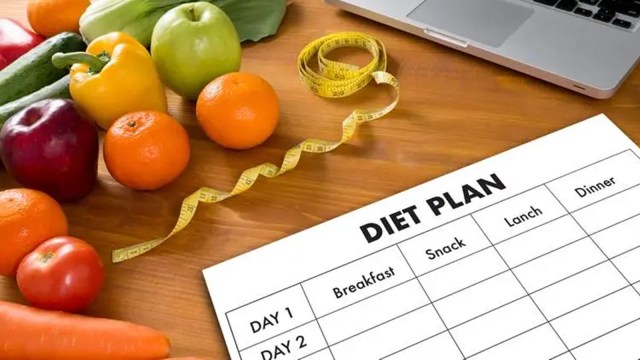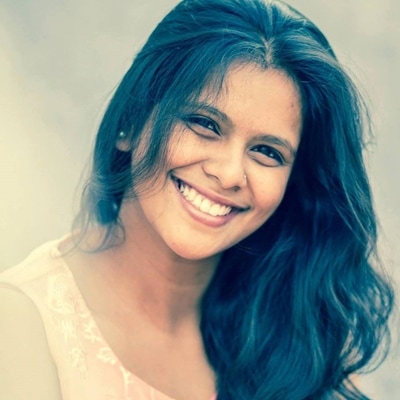- India
- International
ICMR-NIN diet plan to stop heart disease, diabetes: No formula for infants, no protein powder, lower salt and sugar
New guidelines are a template for reducing the burden of non-communicable diseases
 As the report shows, a healthy diet, combined with physical activity, can prevent 80 per cent of Type 2 diabetes and significantly reduce the burden of heart diseases, high blood pressure and prevent premature deaths. (Source: Thinkstock Images)
As the report shows, a healthy diet, combined with physical activity, can prevent 80 per cent of Type 2 diabetes and significantly reduce the burden of heart diseases, high blood pressure and prevent premature deaths. (Source: Thinkstock Images)The internet is flooded with wisdom on nutrition, be it weight loss diets, intermittent fasting, turning vegan, giving up carbohydrates or taking supplements. Truth is it is difficult to find a balanced meal that works for you from the information swirling around you. That’s why the National Institute of Nutrition, working with the Indian Council of Medical Research (ICMR), has released a comprehensive guideline on how Indians should be eating clean with easily accessible resources and most importantly, what suits their body type.
Complete with an ideal plate, diet charts, recipes and advisories on how you should be cooking and in what cookware, this is an essential handbook that all of us would find convenient to incorporate in our daily lives. Given India’s growing burden of non-communicable diseases, these guidelines are significant as they lay down the template of foundational nutrition in children, beginning with pregnant women. The report says that proper nutrition for a mother and child (from conception to the age of about two years) is linked not only to proper growth and development but also the risk of diabetes, hypertension and heart attacks later in life.
Over 56 per cent of all non-communicable diseases can be attributed to an unhealthy diet. As the report shows, a healthy diet, combined with physical activity, can prevent 80 per cent of Type 2 diabetes and significantly reduce the burden of heart diseases, high blood pressure and prevent premature deaths. It has even warned against taking protein supplements for building body mass and recommended restricting salt intake, minimising sugar and ultra-processed foods and reading information on food labels correctly.
DIET FOR PREGNANT AND LACTATING MOTHERS
A woman needs to consume extra calories when pregnant to meet her nutritional needs. Ideally, she should gain around 10 to 12 kg, lesser if she is already overweight. Women with a healthy body weight during pregnancy are more likely to give birth to babies with the ideal birth weight and proper organ development. Such newborns are then likely to have a lesser risk of infection and mortality.
In a day, a pregnant woman should consume 240 grams of cereals and millets, 80 grams of pulses, 40 grams of nuts and seeds, 20 ml of cooking oil, 300 grams of vegetables, roots and tubers such as carrots, cauliflower and peppers, 150 grams of leafy vegetables such as spinach or coriander, 150 grams of fruits and 400 ml of dairy products, including milk, curd, 80 grams of meat and lean meat like chicken in a day or 250 to 300 gram in a week.

The guideline recommends small, frequent meals for mothers experiencing nausea and vomitting. It advocates only breast milk for all infants till six months as it contains all the nutrients an infant needs. Infants should not be fed anything other than breast milk for six months, not even water. They certainly should not be given honey, glucose or diluted milk formula before six months of age. Pregnant and lactating women should not have any medicines without consulting doctors.
NO FORMULA FOR INFANTS
After six months, children need complementary food in addition to breast milk. Preparing these at home is better than purchasing formula, which usually have added sugars. Complementary food can be prepared at home by mixing 25 gram pureed carrot, pumpkin, spinach, potato or apple with 15 gram rice rawa, 15 gram of lentil rawa and 200 ml of water. The same can be done with mashed boiled egg or fish instead of the vegetable or fruit. Children can snack on green peas or lobia — pureed for children below one and boiled for older ones. They can also be given fruits such as papaya and banana, curd, boiled egg or boiled and mashed fish.
The complementary foods should be given two to three times a day along with breastfeeding till one year. These children should be given complementary foods four times a day as they cannot have a lot of food in one go.
CALCIUM FOR ADOLESCENTS
Between the ages of 10 and 19 years, adolescents rapidly increase in height and weight, undergo hormonal changes and sexual maturation and hence require a high calorie intake. Their calcium requirement is also high and, therefore, they should be encouraged to consume milk and milk products. Nutritional care of adolescent girls is of particular importance for their own health and in preparation for motherhood in future.
This is the age group when the human body needs the highest number of calories, 2,490 kcal for girls and 3,300 kcal for boys. It is equally important to ensure they do not overeat. Heavily processed and packaged foods should be avoided.
COMBOS FOR THE ELDERLY
The guideline says that elderly people should consume foods rich in proteins, calcium, micronutrients and fibre. Apart from pulses and cereals — with at least one-third as whole grains — they should consume at least 200-400 ml of low-fat milk or milk products, a fist full of nuts and oilseeds and 400-500 g of vegetables and fruits. The guidelines prescribe low salt and spices. The elderly need regular exercise to maintain bone density and muscle mass.
PROTEINS FOR PLANT FOOD EATERS
Proteins are not only necessary to build and maintain good muscle mass, they are needed for many functions in our body. While the diet of an adult often has enough protein, what kind of protein is consumed is more important. Our body needs 20 amino acids — constituents of proteins — but nine of these are essential because they cannot be produced by our body. While animal protein eaters can easily source their quota from fish, poultry or lean meat, plant food eaters have to consume cereals and pulses.
There is a special guideline for vegans which says that they should consume cereals and pulses in the ratio of 3:1 to get the essential amino acids. Vegetarians can add 250 ml of milk.
The guidelines talk of protein powders — mainly made from eggs, milk, or whey (a byproduct of cheese or paneer) — that are taken by many athletes. Arguing that the protein requirement among humans is not as high as is commonly perceived, the reckoner says that even athletes can get their requirement through food alone. “The prolonged intake of a large amount of protein is associated with potential dangers such as bone mineral loss and kidney damage,” the guideline says.
HOW MUCH OF OIL AND SALTS ARE SAFE
Since most foods already contain sodium, added salt should be bare minimum. Salt intake should be restricted to five grams a day. The Indian food intake data indicates that an average consumption of salt ranges from 3 g to 10 g/day in different states with about 45 per cent of the population consuming more than 5 g/day.
Oil intake should be minimised with a sharp focus on more vegetable-based sources as they do not contain cholesterol. One should avoid cooking products such as ghee that contain saturated fats. Most importantly, the new rule book argues against reusing and reheating oils as they can produce harmful substances.
May 20: Latest News
- 01
- 02
- 03
- 04
- 05






























